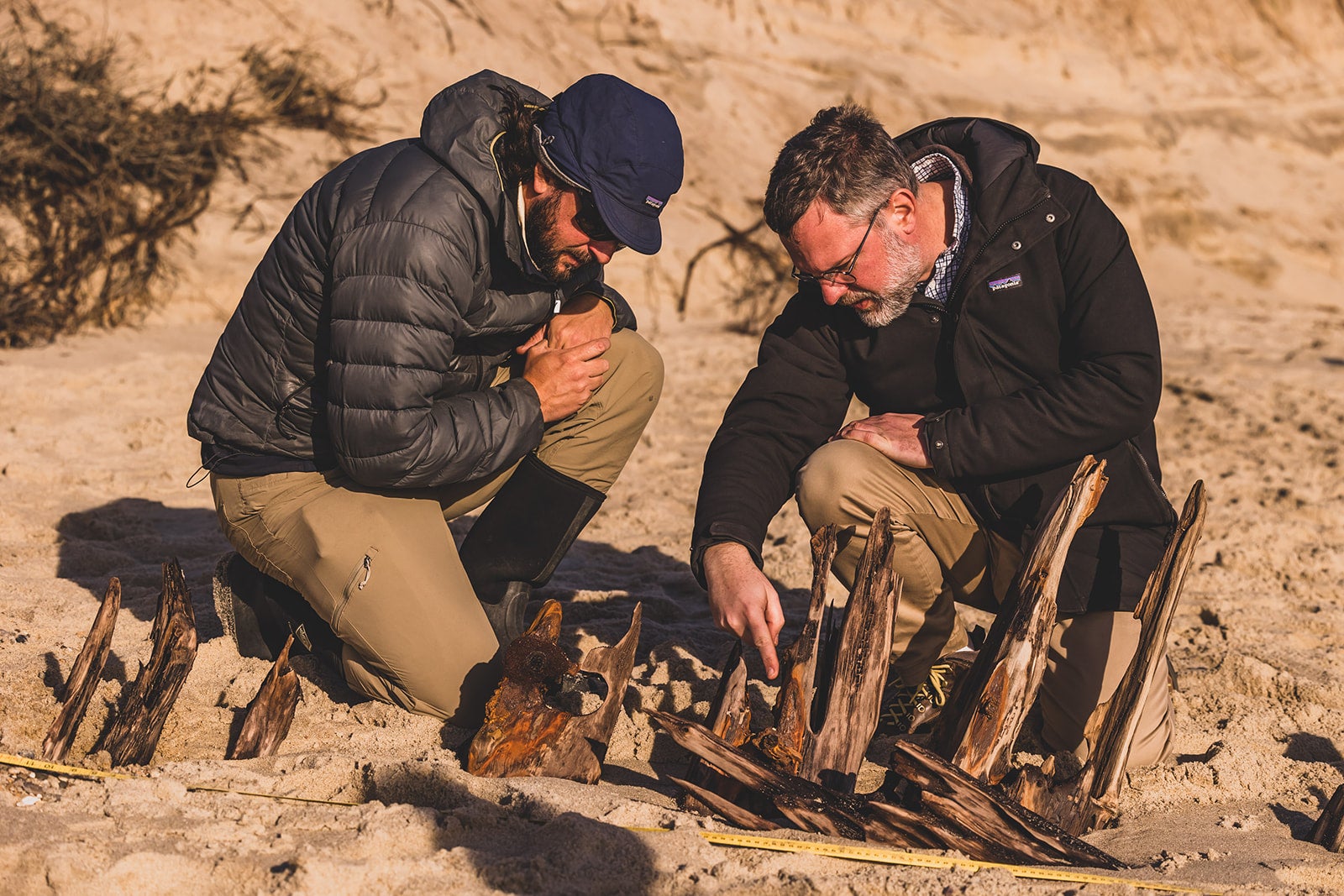Has mystery of shipwreck exposed by erosion been solved?
The boat was discovered by a man from Nantucket on an early morning bike ride

Your support helps us to tell the story
From reproductive rights to climate change to Big Tech, The Independent is on the ground when the story is developing. Whether it's investigating the financials of Elon Musk's pro-Trump PAC or producing our latest documentary, 'The A Word', which shines a light on the American women fighting for reproductive rights, we know how important it is to parse out the facts from the messaging.
At such a critical moment in US history, we need reporters on the ground. Your donation allows us to keep sending journalists to speak to both sides of the story.
The Independent is trusted by Americans across the entire political spectrum. And unlike many other quality news outlets, we choose not to lock Americans out of our reporting and analysis with paywalls. We believe quality journalism should be available to everyone, paid for by those who can afford it.
Your support makes all the difference.The mystery over the origin of the skeletal remains of a shipwreck unearthed by the shifting tides of an island may have been solved.
The “really old” ship was discovered by 39-year-old Matthew Palka on the tiny island of Nantucket, off Cape Cod, Massachusetts, in December.
The landscaper found it when he stopped for a breather during an early morning bike ride and saw the wooden ribs of the ship exposed by beach erosion.
Officials from the Egan Maritime Institute, a non-profit organisation that owns and operates the Nantucket Shipwreck and Lifesaving Museum, worked with the town and the state’s Board of Underwater Archaeological Resources to research its history and what led it to its fate.
Now, experts believe it is a schooner called Warren Sawyer that was wrecked nearby on Miacomet Beach on December 22, 1884. However, based on the state of the observable hull at the time of the survey and an inconsistency in the type of fastening hardware recorded for that ship, they cannot claim it to be the Warren Sawyer with complete certainty.
Charles Allard, director of Egan Maritime’s Shipwreck and Lifesaving Museum, said: “Her unfortunate end on the island’s south shore in 1884 is one of Nantucket’s most complete and remarkable stories of shoals, storms, and rescue.
“The Surfside Life-Saving Station saved the crew, wreckers salvaged most of the cargo, and the shipwreck site has been known to reveal itself about every 20 years.”

David Robinson, director of the Massachusetts Board of Underwater Archeological Resources, said: “As with most historical archaeological research, exploring the available literature, archival, photographic, and archaeological evidence we collectively assembled for the site to try to arrive at a conclusive determination as to whether or not the wreckage is from the tern, Warren Sawyer, was a bit like pulling a thread on a sweater.
“The more interesting information I looked at, the more that I found.”
On Nantucket Island, erosion is typically the reason that shipwrecks surface out of the sand, according to Egan Maritime’s website. Ships that wrecked around Nantucket were usually victims of New England’s powerful winter storms.
Nantucket’s shoreline has always been shifting but climate-led erosion has become a major problem in coastal areas across the US.
As a consequence, it is rare that a good-sized hull would remain intact after the wreck. Almost all the shipwrecks around the island were fishing boats or coastal schooners carrying mail, timber, coal, or live pigs.




Join our commenting forum
Join thought-provoking conversations, follow other Independent readers and see their replies
Comments